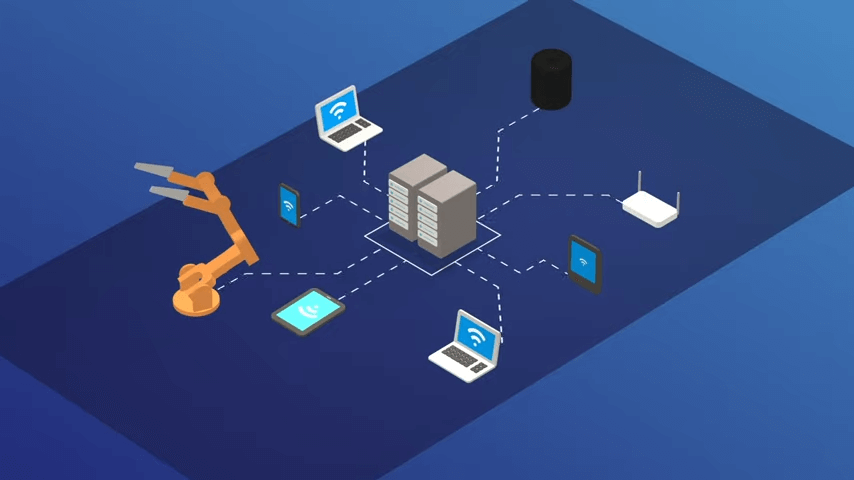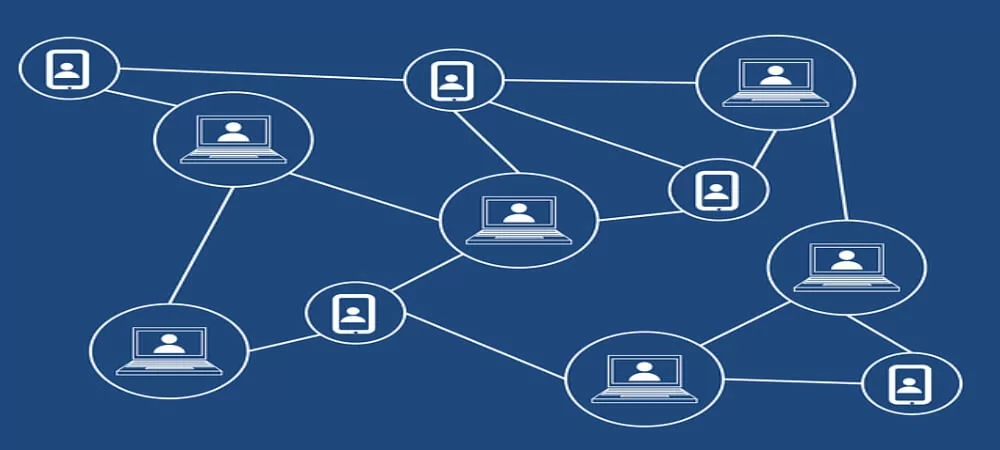Introduction
The Information Technology Industry has seen massive growth in the past decade as we increasingly become connected. Businesses thrive when aided by IT and this has been the major driver in the growth of the Industry. Information Technology provides jobs for large of society, it is one of the hottest industries in the job market. The industry is large, roles are diverse, and offers a lot of opportunities to beginners in the job market. It is also open as well as those who want to transition from other fields. However, one has to be aware that IT careers are constantly evolving. There are emerging trends in technologies that will change businesses and societal perceptions in general
This article will focus on some of the changes that are taking place in IT careers and the emerging trends. It will help you adapt your skills to take advantage of the different opportunities that are springing up. The article will also list niches that are trending and also have huge importance in the future. It is important to keep up to speed in tech so as not to become redundant. Redundancy will often result in job loss. You need to evolve.
Top Emerging Trends Information Technology (IT) Careers
The following is a collection of the most trending IT careers with huge potential for growth. They reflect the current focus in the approach to solving societal problems and business needs. The reasons for these trends is that these technological solutions are innovative and disruptive by nature
1. Artificial Intelligence And Machine Learning

Artificial Intelligence is currently a $538 billion industry with a projected compound growth rate (CAGR) of 19 percent per annum. The Industry’s projection is that it will reach more than $2.5 Trillion by 2032. AI enables machines to “think and act” in a way that is similar to humans. AI is a “software” that writes and updates itself. It will impact businesses and professional work environments. It is currently receiving some of the biggest investments, especially from the major big tech. The potential for creating a lot of jobs is huge, especially in the future.
The more recent emerging trends in AI releases include Chatbots like Chatgpt by OpenAI, Bard by Google, Medjourney for Artworks, etc. The deployment of these is as AI as a Service (AIaaS) model. This service model is where a third party manages the technology. It is similar to Software as a Service(SaaS), Platform as a Service(PaaS), and Infrastructure as a Service(IAAS) in Cloud technology). There will be tailor-made solutions by AI and Machine learning covering almost all spheres of business and professional life. The career opportunities can be enormous. It is one of the emerging technologies that will have a huge impact on society in the near future.
Prior to the current trends and explosive growth, Artificial Intelligence and Machine Learning consisted of many disciplines (e.g. Robotics, Computer Vision, Image Generation, Speech Recognition, Speech Synthesis, Music Generation, etc.) that were often difficult to consolidate into one. However, this changed with the invention of the new AI engine called the Transformers, this meant that everything could now be treated as “Language“.(E.g. Images, Sounds, Data, Videos, Signals, Vibrations, Texts, etc.) and could be fed as inputs to train AI models and produce outputs in different Modalities.
AI will automate more repetitive tasks in the future. It is important to learn how it can improve your work quality and output.
2. Cybersecurity

Cybersecurity is the practice of protecting computer systems, networks, applications, and data from unauthorized persons who may have malicious intent. It involves implementing measures and adopting strategies to ensure the confidentiality, integrity, and availability of data. In a world where there are more interconnected devices, the risk of having those devices and networks compromised by bad actors also increases dramatically. The Cybersecurity space is estimated to be worth over $200 billion and is projected to grow at a compounded annual growth rate of 12 percent.
Cybersecurity job roles picked up in trend in recent years and it is not showing any signs that there will be a downturn soon. In fact, some reports suggest that there are currently more Cybersecurity jobs available in the US than there are competent professionals to fill those vacancies. Businesses must have a secure environment to operate otherwise they cannot function profitably. To pursue a career in Cybersecurity, a collection of skills such as Networking, Cloud, Programming, knowledge of Operating OS, understanding of the security landscape, etc.
3. Cloud Computing

Cloud Computing is an important technology for modern businesses, startups, and individuals. It basically describes the use of someone else’s computing resources i.e., Computing resources that are made available by Cloud Service Platforms. The market size for Cloud Computing is about $580 billion and is projected to hit 1.24 Trillion by 2028. Cloud Computing is being led by major Tech giants such as Amazon Web Services, Google Clouds, and Microsoft Azure. Cloud Computing has transformed the way computing resources are provisioned and managed in most organizations.
There is an increasing number of businesses transitioning into the Cloud platforms to better manage their infrastructure and deliver their services. Cloud Platforms are offering new and innovative products often at cheaper rates(due to the economies of scale) to businesses. Deployment can happen in just minutes, so is scaling up or down. The growth in Amazon Web Services, Microsoft Azure, and Google Clouds shows a growing trend toward Cloud platforms.
4. Edge Computing

Edge Computing is a distributed Architecture that reduces latency by housing applications’ data and computing resources at locations geographically closest to end users. This is in contrast to having data and computing resources in remote locations where there may be delays in accessing such resources (e.g. in the cloud). Inputs are processed locally at the end devices as a way of reducing latency and saving bandwidth costs. Edge computing is critical for processing data in real-time which otherwise will be degraded if not processed with a near-zero latency.
In a world where we are increasingly more connected and interact with many devices simultaneously, edge computing is an important technology. It plays a vital role in the automation of industrial processes where machines access computing resources locally (from Edge servers). It combines networking architecture, software, and hardware resources to address business needs. Edge computing is a critical component of other emerging technologies like the Internet of Things IoT, Virtual Reality, 5G, and AI. It fills the gap that would otherwise be inefficient using cloud technology.
Edge Computing is currently in its infancy with a market size for Edge Computing is about $16 billion but with a Compound Annual Growth rate of 37 percent. It does provide huge potential for growth for those who wish to pursue career options in it.
5. Data Science, Machine Learning, And Big Data

We live in a world where data is continually being generated (sometimes very large) and organizations rely on such data to make important decisions. These are the domains of Data Science ML and Big Data. Data Science attempts to make sense of data and sometimes teaches a machine to do so (Machine Learning). it uses scientific methods, processes, and algorithms to extract insights from both structured and unstructured data. The Data Science Industry is currently worth about $80 billion and has a Compound Annual Growth Rate of about 29 percent.
Data is a valuable resource, organizations are looking for ways to better understand and make the best use of data. When there is a large pool of data constantly, (large, fast, and varied) being produced in a way that it is difficult for humans to analyze, a new approach is needed -that is Big data, It is the process of collecting, processing, reviewing, analyzing and extracting insights from the large and complex data set.
The Career opportunities (Data analyst, Business Intelligence Engineer, Data Architect, etc.) help analyze data for organizations and help them make informed decisions. Data Engineers help design and maintain systems and architecture that are needed to store data volumes(such as you would have in a data center). Useful skillsets that are required to develop a career in Data Science, Machine Learning, and Big Data include Mathematics, Databases, Statistics, Programming (Python is a good choice for ML), etc.
6. True 5G Technology

5G is the fifth generation of mobile network connectivity. True 5G technology will stretch the capabilities of the current mobile Wi-Fi connectivities to a level that will allow near-zero latency and large bandwidth. This will be ideal for future advancement across many industries. From driverless cars to remote surgeries, smart cities, IoT devices, Real-time integration of devices communicating at near-zero latencies. It will connect everyone and everything, including machines, and open new doors of opportunities.
The current value of the 5G market is over $100 billion and will exceed $300 billion by 2027. All major telecommunication companies are investing in 5G. Its deployment does include a significant amount of infrastructure and manpower. Advancing your skills as it relates to Wi-Fi technology and networking can give you a headstart in this. The demand for 5G is going to grow exponentially as we become more connected and so will the demand for skills relating to 5G.
7. Blockchain Technology

Blockchain is increasingly more important. It has the potential to become a disruptive technology across different industries. Blockchain is a distributed ledger technology that records transactions. The core technology is cryptography. Cryptography (blockchain) is commonly used for creating secured systems, executing Smart Contracts, tracking, identification, tamper-proofing, etc. The emerging trends in Blockchain technology go beyond its popular application in Bitcoin and different cryptocurrencies. There are real-world industrial applications such as security, tamper-proofing, and smart contracts.
Blockchain technology is receiving a lot of funding from both the Government and corporations. These funds are usually for research and the development of future applications. The top Cloud Service Platforms like Google, Amazon, and Azure have tools to build and deploy applications on the blockchain. There is a huge demand for Blockchain skills. The number of available skilled professionals in the field is relatively small.
Conclusion
The world of technology is constantly changing to meet new demands and challenges. Keeping up with emerging trends and technologies is the best way to stay relevant. Explore new solutions and career opportunities. Some of the technologies that are shaping business and society include Artificial Intelligence, Cloud Computing, and Edge Computing. Others are Data Technology, Machine Learning, Cybersecurity, 5G, and Blockchain Technology. These are some of the fields that will shape the next phase of opportunities in IT and Tech.




